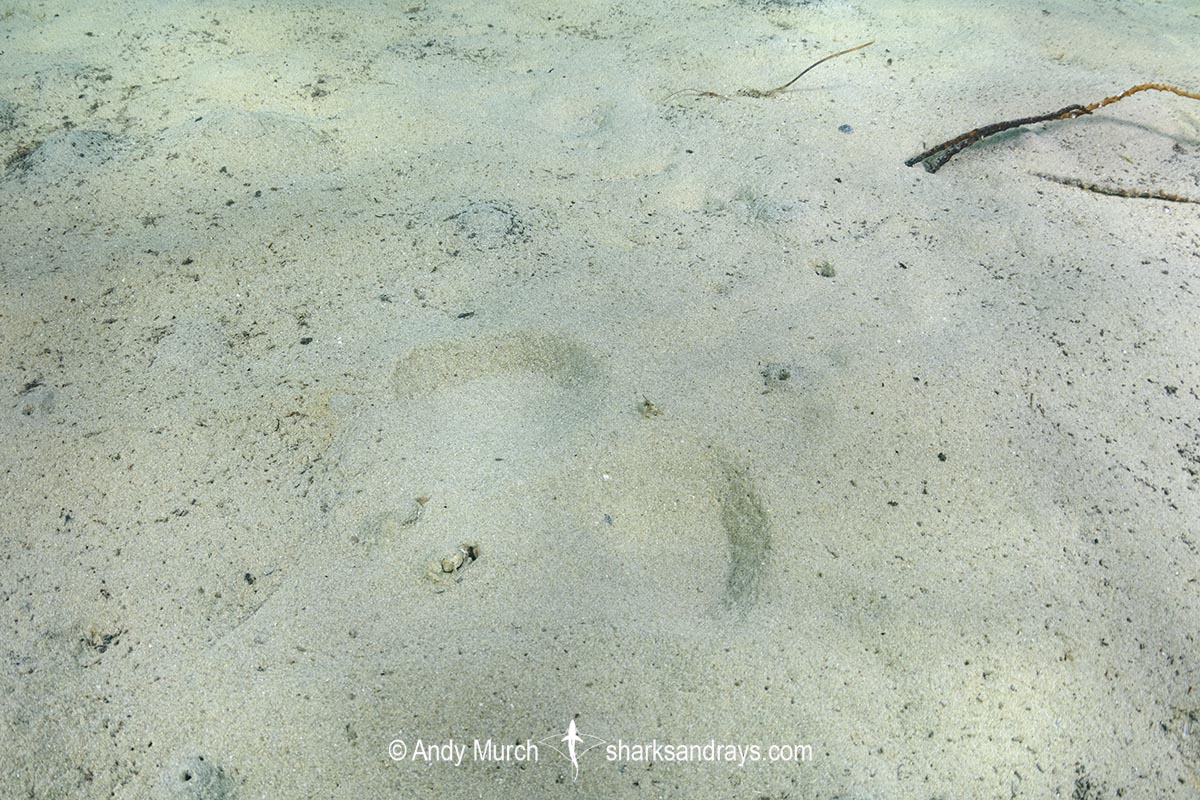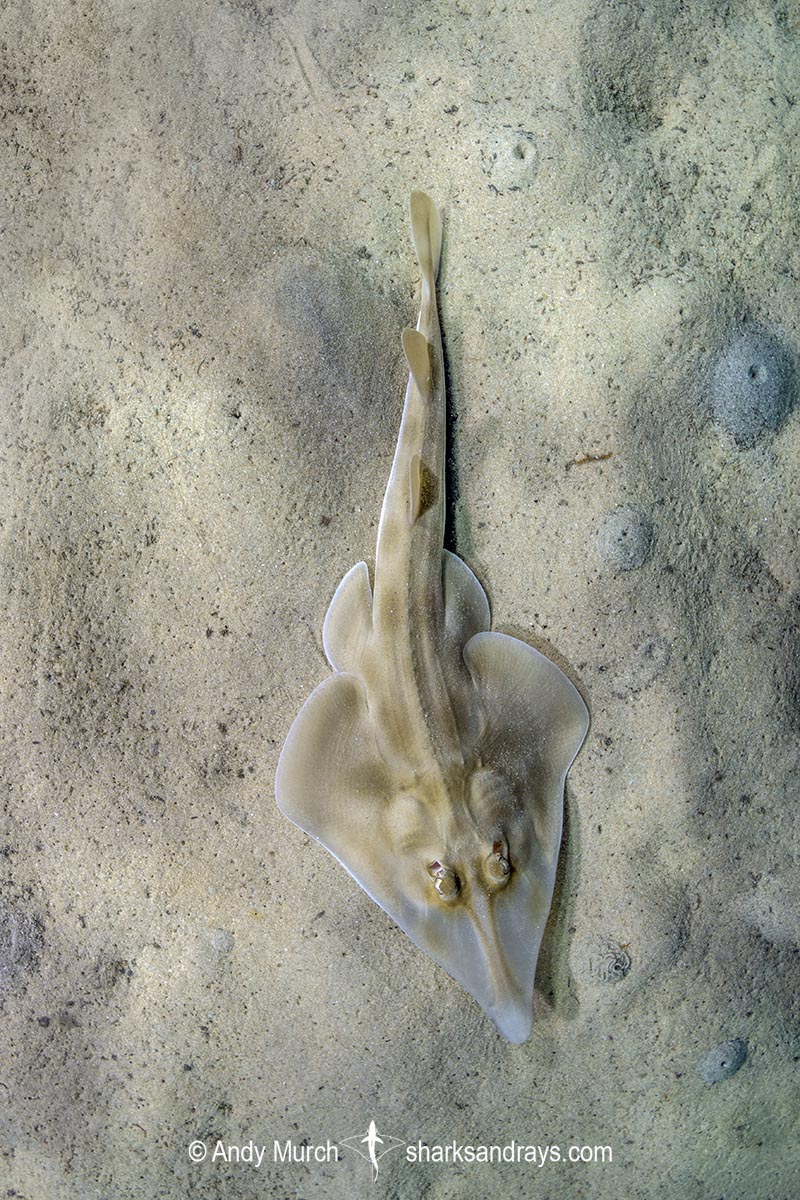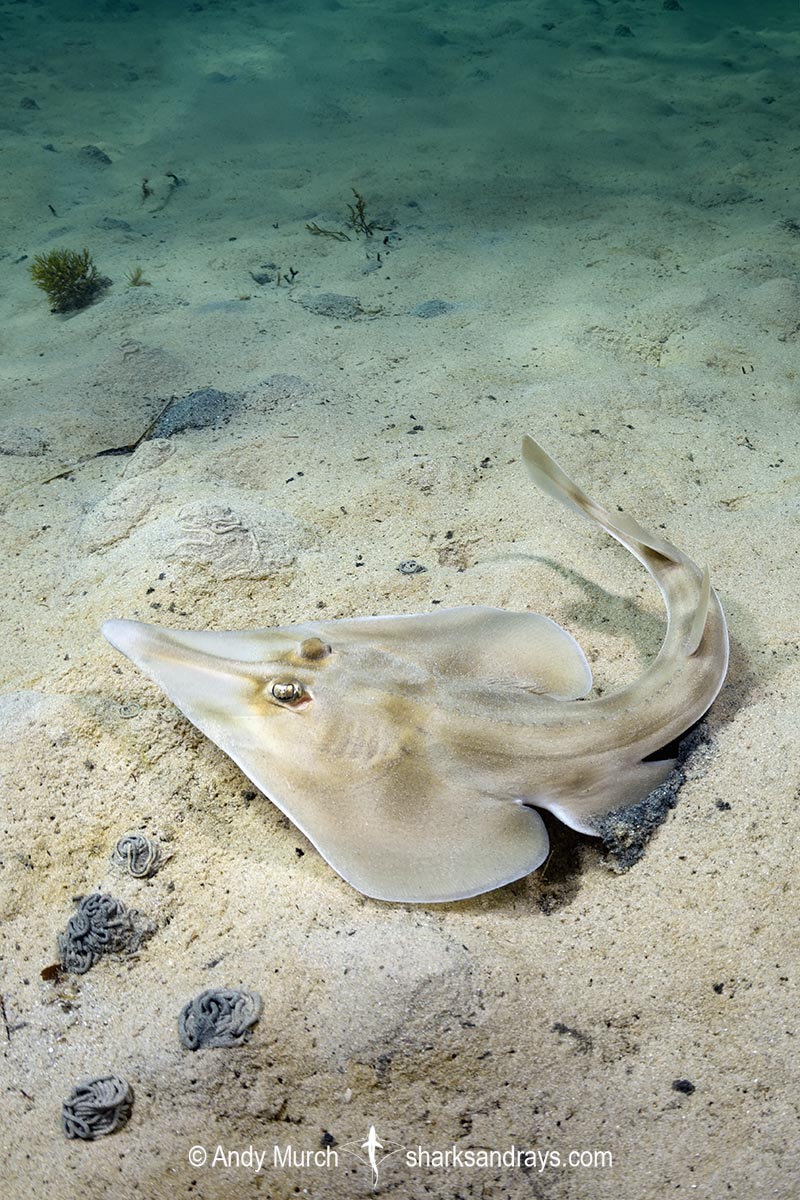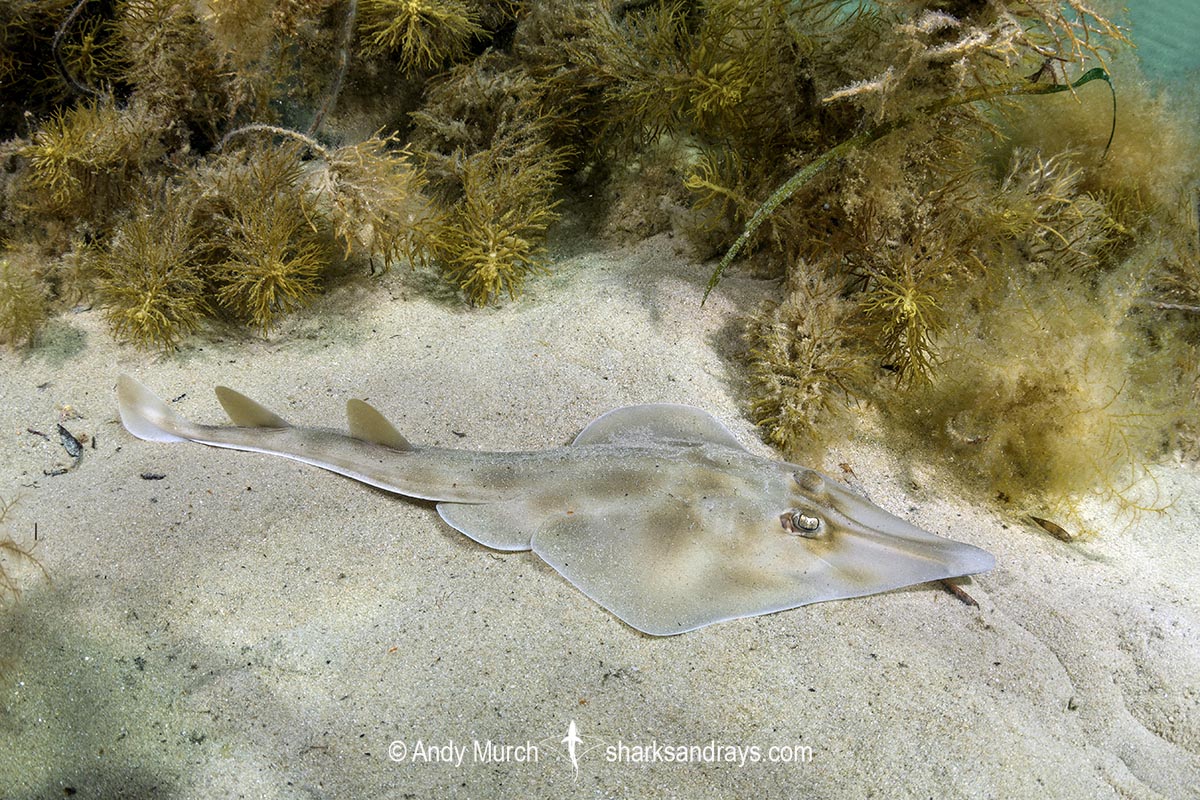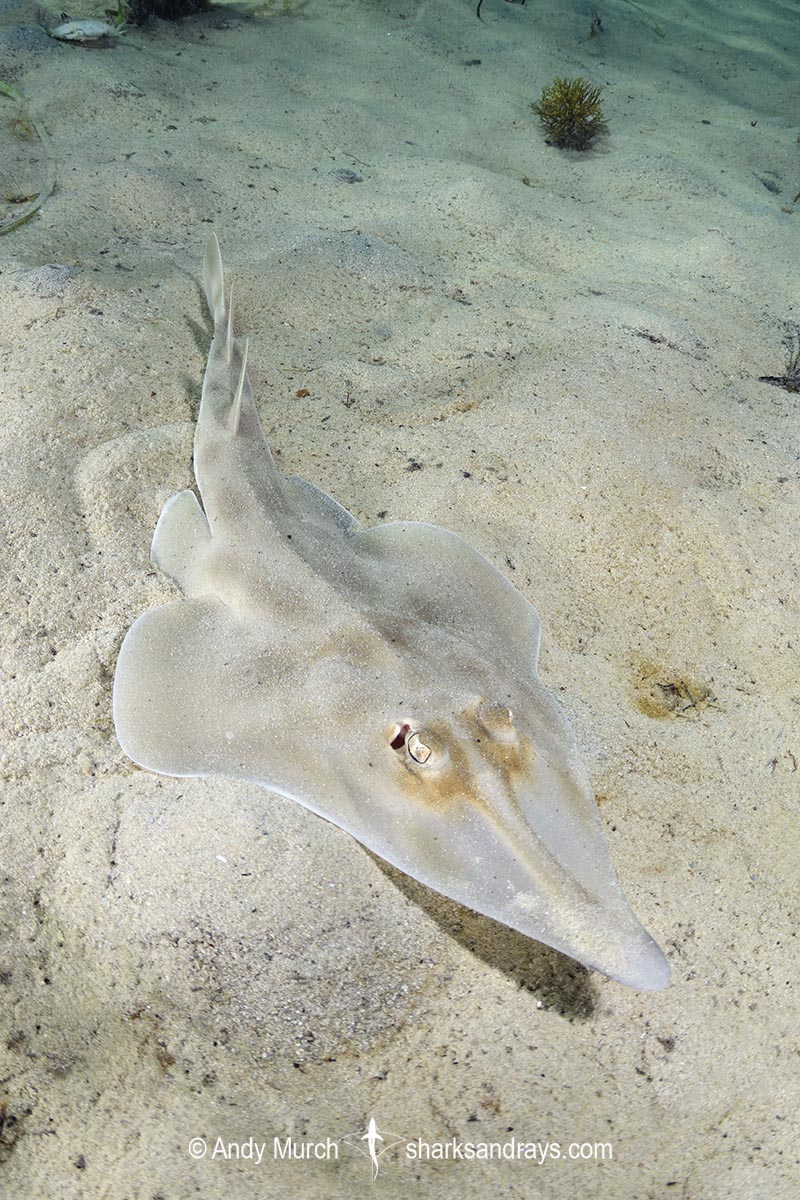Common names
Western Shovelnose Ray, Southern Shovelnose Ray, Yellow Shovelnose Ray.
Binomial
Aptychotrema vincentiana.
Synonyms
Rhinobates vincentianus, Rhinobatus vincentianus.
Identification
A medium-sized shovelnose ray with a very long, narrow, acutely pointed snout with narrowly separated rostral ridges. Eyes small. Snout length 5.1-5.9 x orbit length. Spiracles without lobes or skin folds but sometimes with a small lump. Nostrils nearly transverse. Nasal curtain absent. Small, pointed nasal flaps extend slightly beyond nostril opening.
Anterior margins of disc straight or slightly undulate. Pectoral apices angular or rounded, posterior margins broadly rounded. Dorsum covered in small denticles. 2-4 pre-orbital thorns, 1-2 thorns over spiracle, 2 groups of small thorns on each shoulder (poorly defined in adults), and 18-20 midline thorns along back and tail to first dorsal.
Tail robust, 1.3-1.4 x disc length. Dorsal fins large and well separated, with narrowly rounded apices. Caudal fin triangular, without a defined lower caudal lobe.
Colour
Dorsum yellowish-brown with large, diffuse, darker brown, dusky blotches. Blotches around eyes golden, more-so in juveniles. Rostral cartilage pale. Lateral skin fold on tail white. Ventrum white with irregular small dark flecks.
Size
Maximum length 100cm.
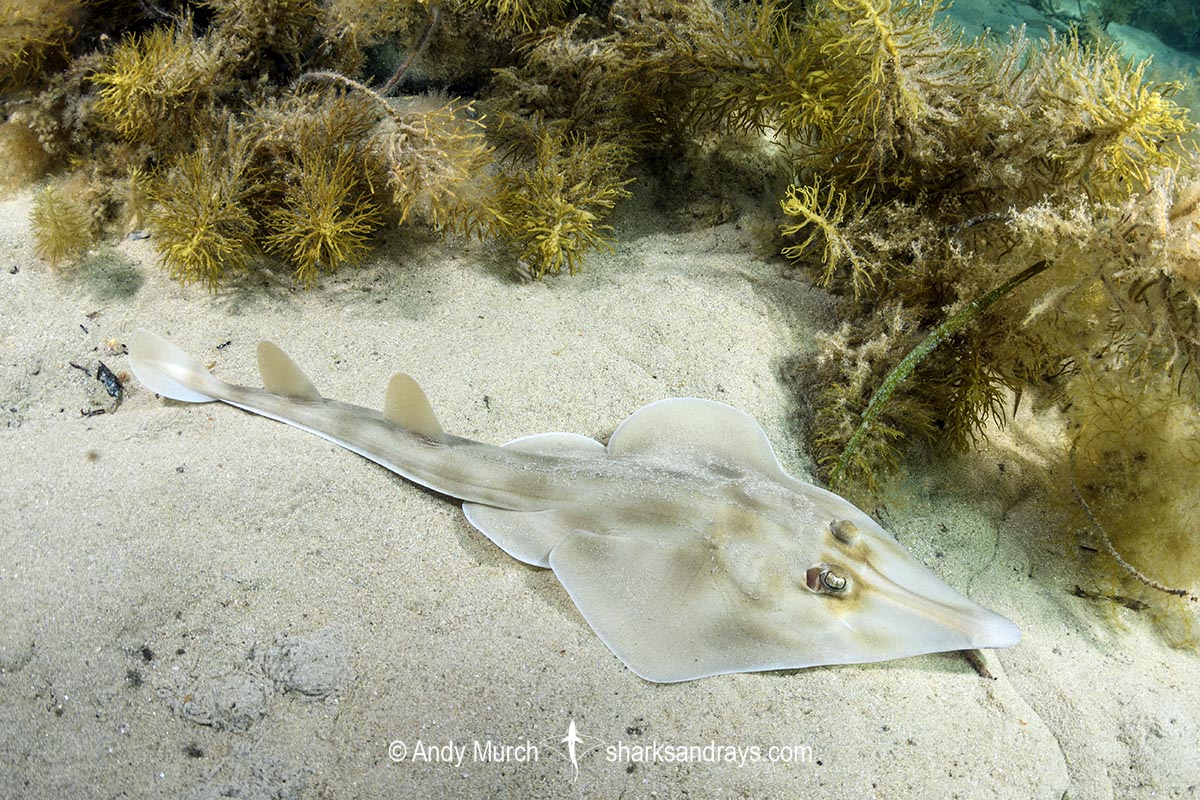
Conservation Status
LEAST CONCERN
The Western Shovelnose Ray is caught regularly in various commercial fisheries. Although generally discarded, but is retained and marketed in some areas. Fortunately, Aptychotrema vincentiana is one of the most productive rhinobatids with litter sizes of 14-16 pups. Its population trend has not been assessed but the population appears to relatively stable.

Habitat
Tropical/temperate seas. Benthic on shallow sandy beaches and seagrass beds. Records from deeper offshore environments in northern WA, may be a different species. From close inshore (observed in 2m) to 125m, but usually shallower.
Distribution
Australian endemic. Southeastern Indian Ocean and Southern Ocean. From Port Hedland in Western Australia to the Bass Strait in Victoria.
Reproduction
Aplacental yolksac viviparous. Litter size 14-16.
Diet
Feeds mainly on decapod crustaceans and small bony fishes.
Behavior
Buries in the sand when resting; see image #1.
Reaction to divers
Easy to approach. Can be skittish but generally tolerant of divers unless molested. Juveniles tend to be more approachable than adults.
Diving logistics
Western shovelnose rays are apparently fairly common at dive sites around Adelaide. I only saw one during a multi-day visit, but the amount of reports from other divers indicate that they must be fairly easy to see.
Other spots where divers see this species include shore dives off Perth and Albany in Western Australia.
What’s new
View our full list of updates
Similar species
Eastern Shovelnose Ray Extremely similar. Distinguished by subtly different snout shape, DNA, and east coast Australian range.

